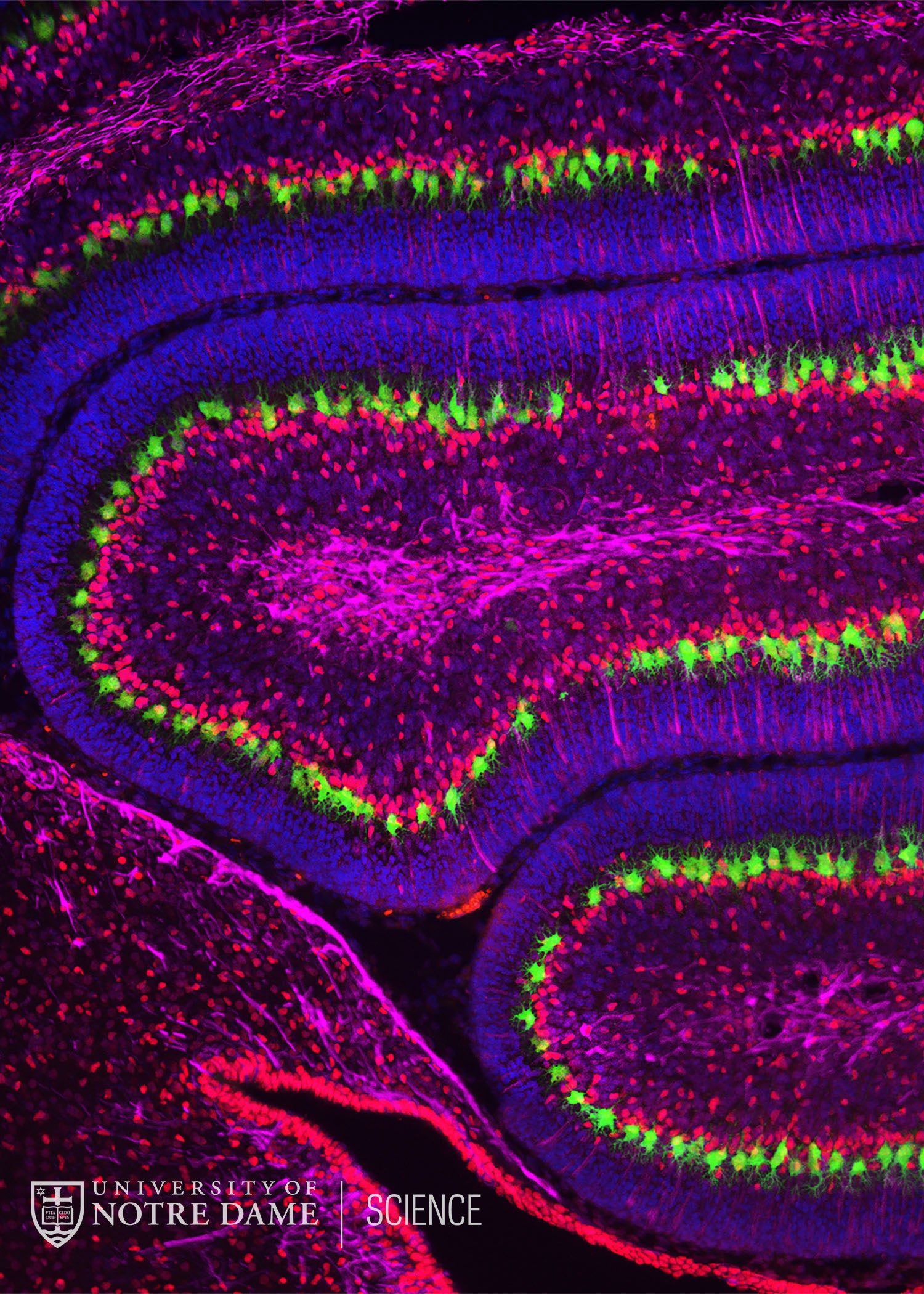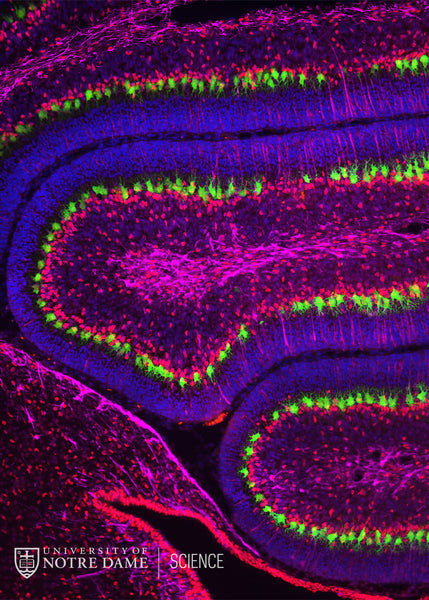

Alexander Wojcinski, Ph.D., Postdoctoral Fellow (Alexandra Joyner Laboratory), Sloan Kettering Institute
The cerebellum of the brain is best known for controlling motor coordination, but it also controls behavioral traits such as laughing, crying, or general affect. Damage to the cerebellum can lead to movement disorders (ataxia) as well as cognitive or social disorders, including autism and schizophrenia. During development of the cerebellum, many different cell types (neurons and glia) are produced by stem cells in specific numbers and then differentiate into mature cells with specialized functions. This section shows a region of the developing mouse cerebellum; the many distinct cell types present are indicated by different colors. Particularly striking are the Purkinje neurons (green); with their elaborate dendritic (tree-like) extensions, they are some of the largest neurons in the brain. Damage to Purkinje cells is associated with many forms of ataxia and more recently, alterations in these cells have been documented in schizophrenia.
19-003
